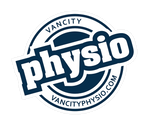Foam rolling is one of the simplest yet most effective tools in physiotherapy and rehabilitation. Whether you're recovering from an injury, managing chronic pain, or just looking to enhance your mobility, incorporating foam rolling into your routine can help improve your flexibility, release muscle tension, and speed up recovery. In this blog, we’ll explore how foam rollers work, the key benefits, and essential tips to get the most out of your foam rolling sessions.
What Is Foam Rolling?
Foam rolling is a form of self-myofascial release (SMR) that uses a foam roller to apply pressure to specific muscle groups. This technique helps release tightness in the fascia (the connective tissue surrounding muscles), improve blood flow, reduce muscle soreness, and improve overall movement.
A foam roller is a cylindrical tool made from dense foam that comes in various sizes and densities. It is commonly used in physiotherapy to relieve muscle tightness, alleviate pain, and enhance mobility.
Why Foam Rolling Is Beneficial for Physiotherapy
-
Release Muscle Tension
Foam rolling can help break down adhesions (knots) and increase blood flow to the muscles, reducing tension. By regularly foam rolling, you can experience a significant reduction in tightness and discomfort in the muscles and soft tissues. -
Improve Range of Motion
Increased mobility is one of the key reasons foam rolling is incorporated into physiotherapy. By breaking up fascial restrictions and improving tissue flexibility, foam rolling can help restore a full range of motion to stiff or tight areas. -
Aid in Recovery
After an injury or intense physical activity, foam rolling can speed up recovery by reducing delayed onset muscle soreness (DOMS) and increasing circulation, helping to flush out metabolic waste products from the muscles. -
Reduce Risk of Injury
Regular foam rolling helps keep muscles loose and flexible, which reduces the risk of injury during physical activity. It can also help prevent overuse injuries by improving the body’s movement patterns and joint stability. -
Promote Relaxation and Stress Relief
Foam rolling isn’t just for recovery; it can be a calming activity. The gentle pressure applied during foam rolling can help activate the parasympathetic nervous system, which is responsible for relaxation and reducing stress.
Essential Foam Rolling Tips for Physiotherapy
-
Choose the Right Foam Roller
Foam rollers come in a variety of textures and densities. For beginners or people with sensitive muscles, a softer foam roller is recommended. Advanced users or those with more dense muscle tissue may benefit from a firmer, textured roller. Experiment to find what works best for your body. -
Focus on the Major Muscle Groups
When foam rolling, focus on the larger muscle groups first—such as the quads, hamstrings, calves, back, and IT band. These areas are commonly tight and may benefit from foam rolling to improve mobility and reduce discomfort. -
Roll Slowly and Deliberately
It’s important to roll slowly over the muscle, pausing on any tight or tender spots (often called trigger points or knots). When you find a particularly tight spot, apply gentle sustained pressure for 20–30 seconds to allow the muscle to release. -
Use Proper Technique
Maintain a controlled and steady motion while rolling. Avoid bouncing or using jerky movements, as this can cause more harm than good. Apply gentle pressure, but don’t overdo it. Foam rolling should be uncomfortable, but it shouldn’t be painful.- For the back: Keep your head supported by your hands and your core engaged. Roll your back in small sections.
- For the legs: Roll one leg at a time, and if you hit a particularly tight area, bend or straighten your knee to target different muscle fibers.
-
Stay Hydrated
Foam rolling helps improve circulation, which can release toxins and waste products from the muscles. To help your body flush out these substances, drink plenty of water before and after your foam rolling sessions. -
Incorporate Foam Rolling into Your Routine
For optimal results, foam rolling should be part of your regular routine. Depending on your level of activity and any muscle discomfort you experience, foam rolling can be done daily or at least 3-4 times a week. -
Don’t Overdo It
While foam rolling is beneficial, overdoing it can lead to irritation. Keep your sessions short and focused, typically 10-20 minutes per session. If you experience persistent pain or discomfort, consult a physiotherapist for guidance.
Common Areas to Foam Roll and How to Do It
-
Lower Back
- How: Lie on your back with the foam roller under your mid-back. Cross your arms over your chest or support your head with your hands. Gently roll up and down the length of your back, avoiding your lower spine.
- Tip: If you feel discomfort in the lower back, avoid rolling directly on that area. Focus on the upper back and surrounding areas.
-
Hamstrings
- How: Sit on the floor with the roller placed under your hamstrings. Lift your hips off the ground and roll from just above the knee to the glutes.
- Tip: To target specific areas, slightly bend or straighten your knee while rolling.
-
IT Band (Outer Thigh)
- How: Lie on your side with the roller under your outer thigh. Support your upper body with your arms, and roll from your hip to just above your knee.
- Tip: The IT band can be particularly sensitive, so if you find this area painful, apply light pressure initially.
-
Calves
- How: Sit with your legs extended and the foam roller under your calves. Lift your body off the ground using your arms and roll from your ankle to the back of your knee.
- Tip: To focus on the calf muscle, flex and point your toes as you roll.
-
Glutes and Piriformis
- How: Sit on the foam roller with one leg crossed over the other knee in a figure-four position. Roll over the glutes, pausing at any tight spots.
- Tip: Tilt your body slightly to target the piriformis muscle, which can help alleviate hip tightness.
Precautions and When to Avoid Foam Rolling
- Recent injuries: If you’ve had a recent injury or surgery, especially one involving the muscles, joints, or connective tissues, consult your physiotherapist before using a foam roller.
- Acute pain: If you’re experiencing acute pain (such as from a muscle strain or sprain), avoid foam rolling directly over the affected area.
- Medical conditions: Individuals with certain medical conditions like osteoporosis or deep vein thrombosis should check with their healthcare provider before using a foam roller.
Conclusion
Foam rolling is a highly effective tool in physiotherapy that can enhance flexibility, promote muscle recovery, and alleviate pain and stiffness. By incorporating proper technique and making foam rolling a regular part of your self-care routine, you can experience improved mobility, reduced muscle tension, and better overall well-being.
If you’re new to foam rolling or dealing with a specific injury or condition, it’s always a good idea to consult with a physiotherapist to ensure you’re using the correct technique for your needs.
Book with us today at VanCity Physio.
Happy Rolling!


